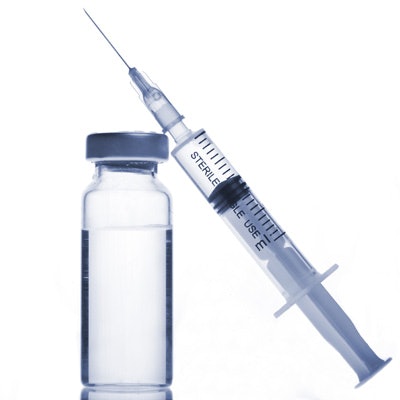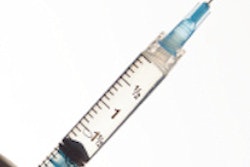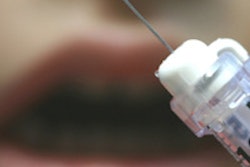
A lower dose of buffered lidocaine may be more effective than a higher but nonbuffered dose of the local anesthetic, according to new research presented at the 2017 American Association of Oral and Maxillofacial Surgeons (AAOMS) meeting in San Francisco.
In the study, patients reported less pain when injected with 1% buffered lidocaine with epinephrine compared to 2% nonbuffered lidocaine with epinephrine. The researchers believe the findings could have clinical importance for children and others who may need lower doses of local anesthetic.
"Clear benefits could accrue to pediatric patients whose lidocaine drug dosages and treatment are now limited by caution not to exceed the maximum blood lidocaine levels based on body weight," the authors wrote in their study, which was also published in the October issue of the Journal of Oral and Maxillofacial Surgery (Vol. 75:10, pp. 2071-2075). "Other patients may also benefit, particularly those with compromised liver function."
James Phero, DDS, MD, a pain management specialist in Cincinnati, led the study. Dr. Phero was a University of North Carolina student when the research was being conducted.
Why buffering works
Buffering neutralizes the acidity of anesthetics, which helps them respond to human tissue faster. Medical studies have found that patients report less pain with buffered anesthetics than nonbuffered anesthetics, although previous research has not readily studied buffering within a dental setting. The researchers therefore conducted a small trial to see if buffering lidocaine would have a significant effect for patients and, if so, whether further trials are warranted.
Twenty-four healthy patients between the ages of 20 and 30 participated in the study. Each subject received one maxillary field block injection of 4 mL of buffered 1% (40 mg) lidocaine with 1:100,000 epinephrine and another dose of 4 mL of nonbuffered 2% (80 mg) lidocaine with 1:100,000 epinephrine. The doses were administered two weeks apart.
The researchers assessed patients' reported pain levels on injection, the length of pulpal anesthesia, and time until sensation was recovered for maxillary first molars and canines. Time until recovered sensation was measured by both a cold stimulus test and an electric pulp test.
The participants reported significantly less pain on injection when they received the buffered solution, compared with the nonbuffered solution. There were no significant differences between the two solutions for time to midface numbness or recovery of sensation as measured by the cold test. However, recovery of sensation took significantly longer for the nonbuffered solution when measured by the electric pulp test.
The researchers suggested the reason buffering reduced patients' pain on injection was likely because buffering makes the anesthetic's acidity similar to that of surrounding tissues.
"Commercially available local anesthetic drugs formulated with epinephrine have a low pH to prolong shelf life, usually around pH 3.5. After the drug is injected, it is buffered by tissue fluid to a more neutral pH," the authors explained. "The drug injected at a neutral pH eliminates the time lag for buffering by tissue fluid, making the maximum unionized form of the anesthetic drug available at the site of injection immediately while retaining the desired qualities of epinephrine."
The most obvious shortcoming of this particular study is the patient sample, which only included 24 people, all of whom were healthy and fell within a similar age range. The authors noted, however, that they hope buffered anesthetics will be further studied in the future.
"In summary, reducing drug dosages while retaining the benefits of effective responses to local anesthetics should be explored further," they wrote. "For example, buffered 2% articaine may be as effective as the 4% drug, minimizing or eliminating the chance of sensory nerve deficit after mandibular nerve block with 4% articaine while retaining the positive properties of the drug, including ready diffusion in tissue and a short elimination half-life in the blood stream."



















